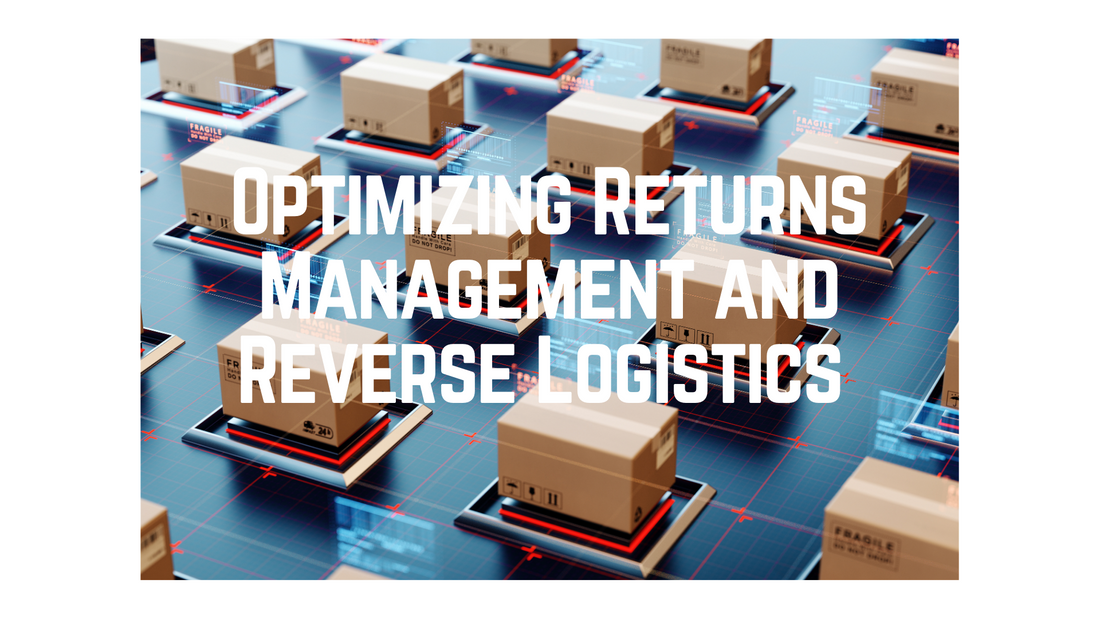In the world of ecommerce, returns are inevitable. As much as we strive to provide our customers with the best possible experience, there will always be cases where they need to return an item for various reasons. This is where reverse logistics comes into play. In this blog post, we will dive into the world of reverse logistics, exploring what it is, its role in the fulfillment services industry, and how to optimize returns management to improve customer experience and reduce costs and environmental impact.
What is Reverse Logistics? Reverse logistics is the process of managing the flow of goods from the point of consumption back to the point of origin, or even to a different destination, for purposes such as returns, repairs, recycling, or disposal. It is the opposite of forward logistics, which is the process of managing the flow of goods from the point of origin to the point of consumption. Reverse logistics is also known as aftermarket logistics, aftermarket supply chain, or aftermarket management.
Role of Reverse Logistics in Fulfillment Services Industry Reverse logistics plays a crucial role in the fulfillment services industry, especially in ecommerce. With the rise of online shopping, returns have become a common occurrence, and managing them effectively is essential for maintaining customer satisfaction and loyalty. Reverse logistics allows businesses to process returns efficiently, restock inventory, and minimize losses. It also helps reduce waste and environmental impact by facilitating the reuse, refurbishment, or recycling of returned items.
Optimizing Returns Management for Better Customer Experience Returns management is a critical component of reverse logistics. It involves the entire process of handling returns, from initiating the return to restocking the inventory or disposing of the item. Optimizing returns management can help improve customer experience, reduce costs, and minimize environmental impact. Here are some best practices for optimizing returns management:
-
Have a clear and easy-to-understand return policy: A clear and concise return policy can help reduce confusion and frustration for customers. Make sure to include details such as the return window, condition requirements, and refund options.
-
Streamline the returns process: The returns process should be easy and straightforward for customers. Provide a simple and user-friendly online returns portal, and consider offering free return shipping.
-
Automate returns processing: Automating returns processing can help reduce processing time and errors. Use software that can handle returns management, including return tracking, refund processing, and inventory updates.
-
Restock returned items quickly: Restocking returned items as quickly as possible can help reduce inventory costs and improve customer satisfaction. Make sure to inspect returned items for quality and ensure they are in sellable condition before restocking.
-
Offer alternatives to returns: Consider offering alternatives to returns, such as exchanges, store credit, or repair services. This can help reduce the number of items that need to be returned and improve customer satisfaction.
Reducing Ecommerce Returns Reducing the number of returns is also essential for optimizing returns management and improving customer experience. Here are some strategies for reducing ecommerce returns:
-
Provide accurate and detailed product information: Accurate and detailed product information can help set the right expectations for customers, reducing the likelihood of returns due to misaligned expectations.
-
Use high-quality product images: High-quality product images can help customers visualize the product better and reduce the likelihood of returns due to the product not meeting their expectations.
-
Use customer reviews and ratings: Customer reviews and ratings can provide valuable insights into the product's quality, fit, and performance, helping customers make informed purchase decisions.
-
Provide sizing and fit guidance: Providing sizing and fit guidance can help reduce returns due to size or fit issues.
-
Use chatbots and customer service: Chatbots and customer service can help customers with their questions and concerns, reducing the likelihood of returns due to misunderstandings or lack of information.
Sustainable Fulfillment
Nowadays, many companies are realizing the importance of sustainable practices and how they can positively impact their business and the environment. Implementing eco-friendly fulfillment strategies not only helps reduce waste and carbon emissions but can also improve customer satisfaction and loyalty.
Sustainable packaging is one of the key aspects of eco-friendly fulfillment. Companies can use materials that are biodegradable or made from recycled materials, reducing the environmental impact of their packaging. They can also reduce the size of packaging, using less material and reducing the space needed for transportation, which can result in lower shipping costs.
Another way to promote sustainability in fulfillment is by using energy-efficient equipment and practices in warehouses. Switching to LED lighting, using motion sensors to turn off lights in unoccupied areas, and using smart temperature control systems can significantly reduce energy consumption and costs. Additionally, installing solar panels or other renewable energy sources can reduce dependence on non-renewable energy sources and help companies meet their sustainability goals.
Furthermore, companies can work with carriers and logistics providers that prioritize sustainability in their operations. Working with a partner that uses hybrid or electric vehicles, reduces empty miles, or has a carbon offset program can help companies reduce their carbon footprint and promote sustainable practices throughout their supply chain.
In conclusion, eco-friendly fulfillment practices are becoming increasingly important in today's business world. Companies can improve their bottom line, customer satisfaction, and loyalty by implementing sustainable practices such as using sustainable packaging, energy-efficient equipment, and partnering with carriers and logistics providers that prioritize sustainability. With the increasing demand for sustainable practices, now is the time for companies to take action and make a positive impact on the environment and their business.

